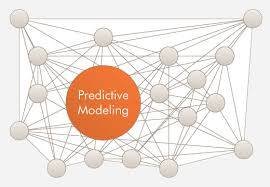 Thanks to ongoing advances in computing and warehousing technologies, big data keeps getting bigger and advanced analytics such as predictive modeling make it ever more useful. The proliferation of smart devices, cloud computing and SaaS applications, both in our personal lives and the workplace, gives us the ability to know more about human behaviors and practices than ever before.
Thanks to ongoing advances in computing and warehousing technologies, big data keeps getting bigger and advanced analytics such as predictive modeling make it ever more useful. The proliferation of smart devices, cloud computing and SaaS applications, both in our personal lives and the workplace, gives us the ability to know more about human behaviors and practices than ever before.
 Thanks to ongoing advances in computing and warehousing technologies, big data keeps getting bigger and advanced analytics such as predictive modeling make it ever more useful. The proliferation of smart devices, cloud computing and SaaS applications, both in our personal lives and the workplace, gives us the ability to know more about human behaviors and practices than ever before. The exciting result is that we have an increasingly ability to learn from past and present events to predict future outcomes, improving human conditions across all industries.
Thanks to ongoing advances in computing and warehousing technologies, big data keeps getting bigger and advanced analytics such as predictive modeling make it ever more useful. The proliferation of smart devices, cloud computing and SaaS applications, both in our personal lives and the workplace, gives us the ability to know more about human behaviors and practices than ever before. The exciting result is that we have an increasingly ability to learn from past and present events to predict future outcomes, improving human conditions across all industries.
Law enforcement, sports, healthcare, retail, and agriculture are just a few industries where big data and predictive modeling are changing the way we work and live.
Understanding the Past and Present to Predict the Future
Predictive modeling is a collection of mathematical techniques used to determine the probability of future events, analyzing historic and current data to create a statistical model to predict future outcomes. The model is validated and revised as additional data and new experiences are available.
Predictive models are increasingly accurate and useful as the volume of relevant data is introduced. In this vein, predictive modeling becomes more valuable over time.
How Various Industries Use Predictive Modeling to Improve Conditions
Here are examples of how differing industries use predictive models to change the way we work and live:
- Law Enforcement — Law enforcement agencies are using predictive modeling to lower the rate and volume of crime in specific communities. Combining data on patrol patterns and level of law enforcement presence with data from past criminal activity such as location, dates, times and type of crime, law enforcement personnel can be dispatched to patrol specific communities at given times to decrease potential criminal activity.
- Sports — Sport franchises and arena organizers are using predictive modeling to maximize profitability of each home game and event. Everything including available merchandise, promotional ticket prices and vendor location and variety of services can be optimized to maximize profitability. Even the rate and frequency of ticket sales, event time and day and opponents can be analyzed to create profitable venues.
- Healthcare — Healthcare organizations are using predictive modeling to assist diagnosing patients and identifying risks associated with care. Analyzing countless data such as family history, lifestyle, past illness and treatment, current medications and lab results, healthcare professionals are able to identify patients at greater risk of disease and re-admittance, leading to opportunities in preventative care and health education.
- Retail — Retailers of all kinds are using predictive modeling to manage inventory and all aspects of their supply chain: forecast, source, fulfillment, delivery and returns. Predictive modeling allows retailers to minimize out-of-stock occurrences and optimize inventory management and warehouse space. Data such as buyer personas, store and display locations, promotional pricing, associated merchandising and even the weather can be analyzed to predict sales volume and buyer behaviors.
- Agriculture — Farmers are using predictive modeling to manage and protect crops from planting through harvest. Decisions can be made on the use of fertilizers and pesticides by analyzing data such as weather, soil moisture, ground temperatures, fungus levels and previous production. Predictive modeling allows farmers to use fertilizers and pesticides at an ideal rate, volume and time to protect crops, as opposed to routine and ongoing use. This lowers the cost of crop production and provides a level of environmental protection.
Conclusions
Fueled by an ever-increasing volume of big data, predictive modeling is being used to improve everything around us from the way we shop to the entertainment we enjoy, and the way we receive health care. The more we know about the past and present, the better we’re able to predict the future to serve others, making faster and better informed decisions capable of reducing costs and increasing customer satisfaction.
Predictive modeling’s deep dive into big data is reaping amazing insights into the way we live, work and play. These insights are leading to innovations and first-in-market opportunities that not only serve corporate interest, but our general condition, responding faster and more cost effectively to customer and constituent needs.






